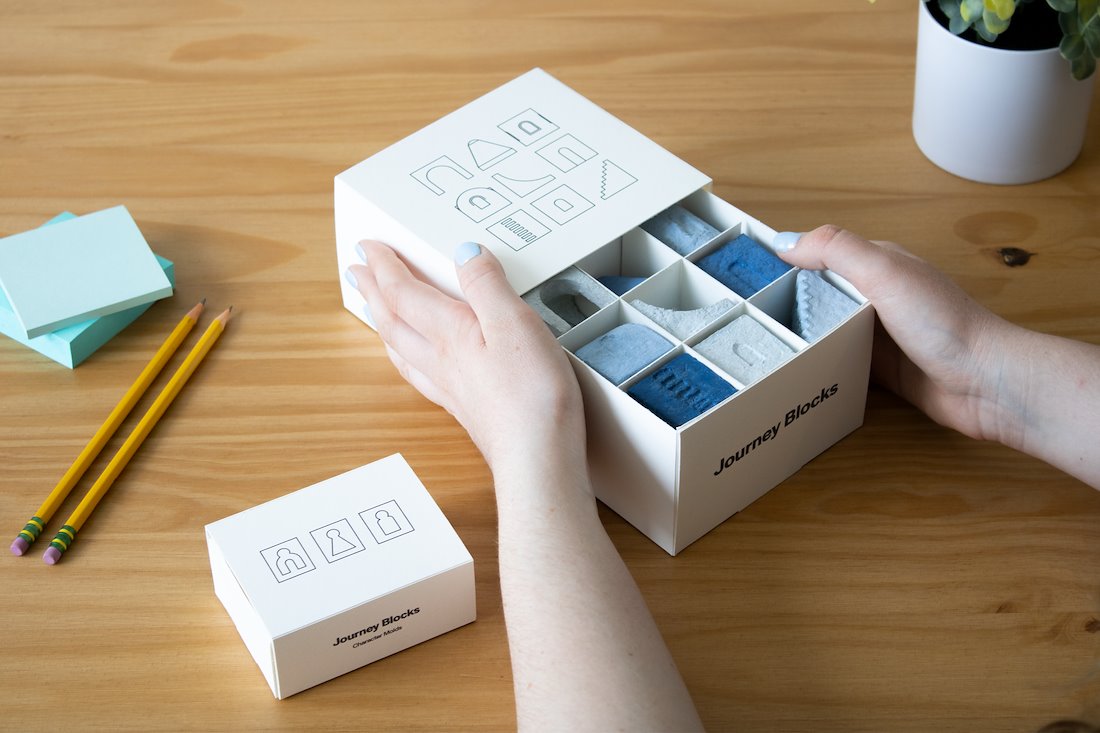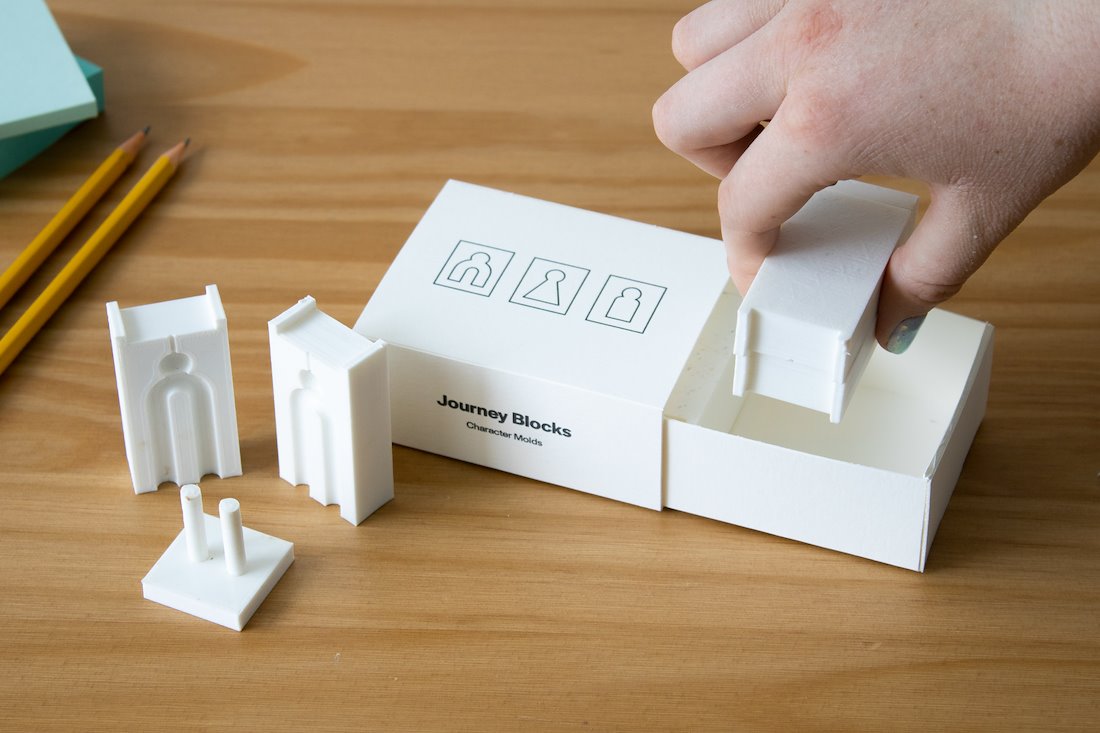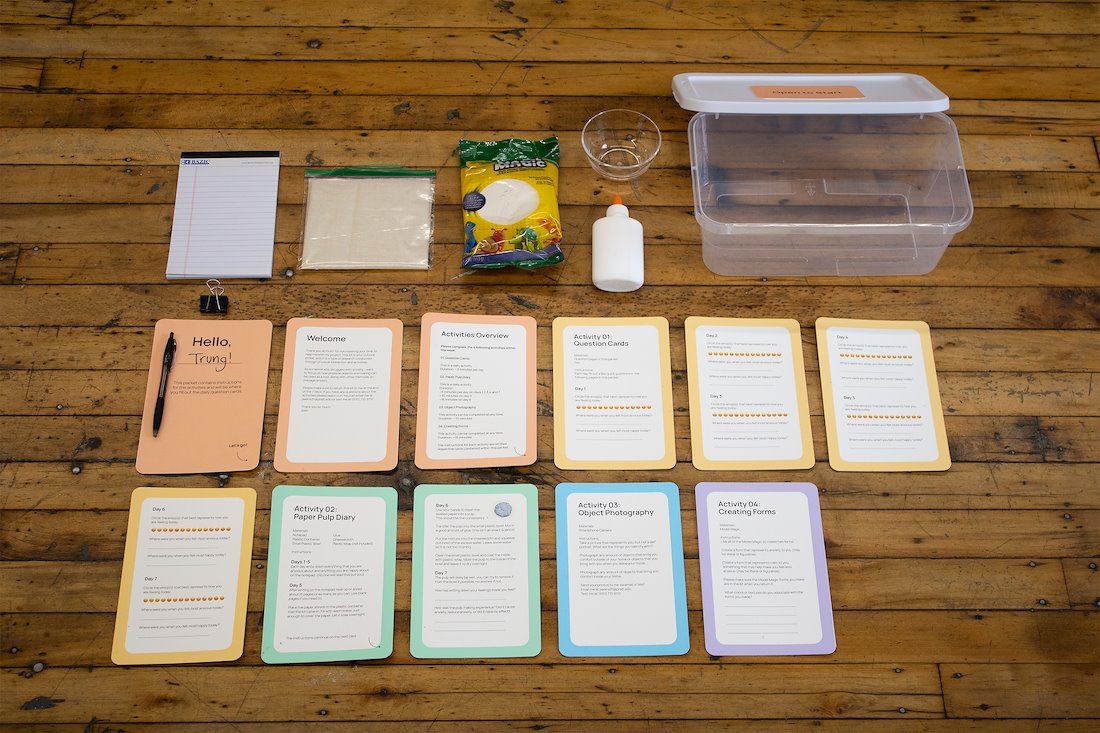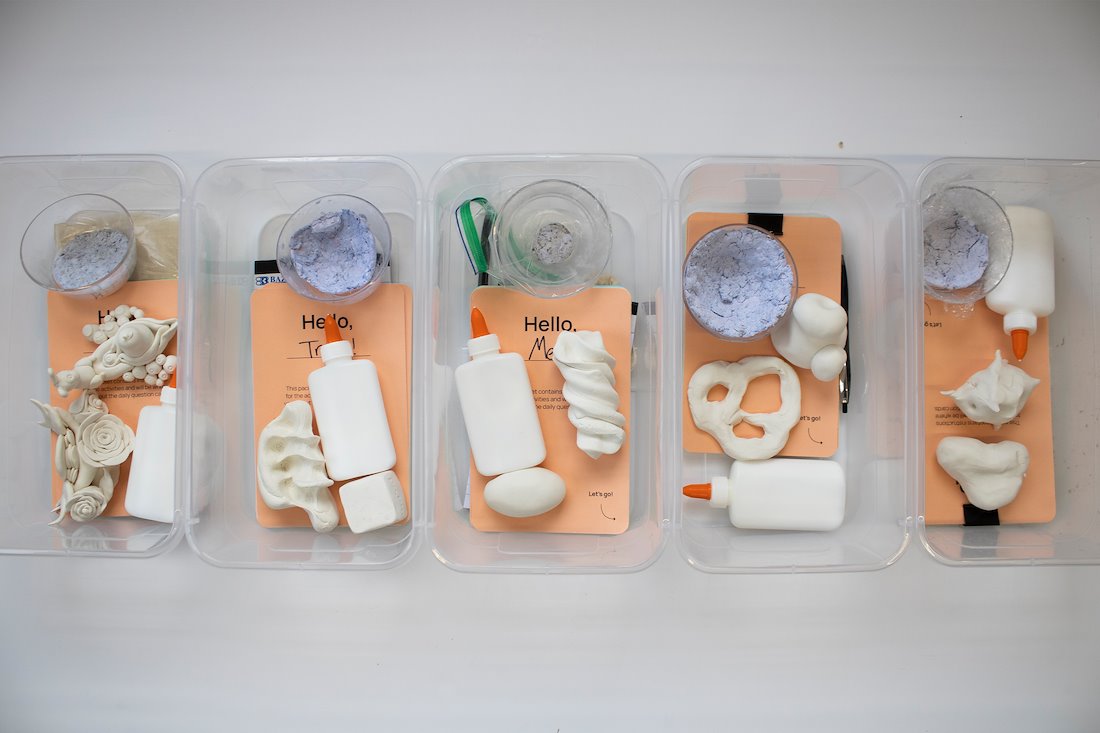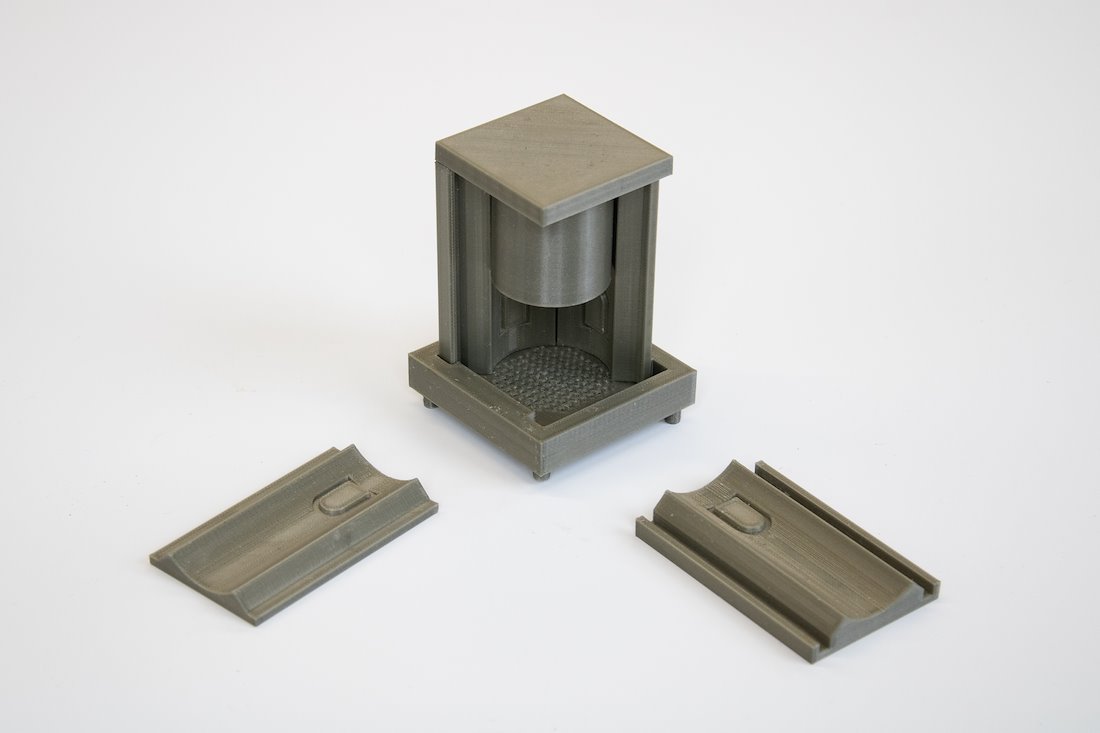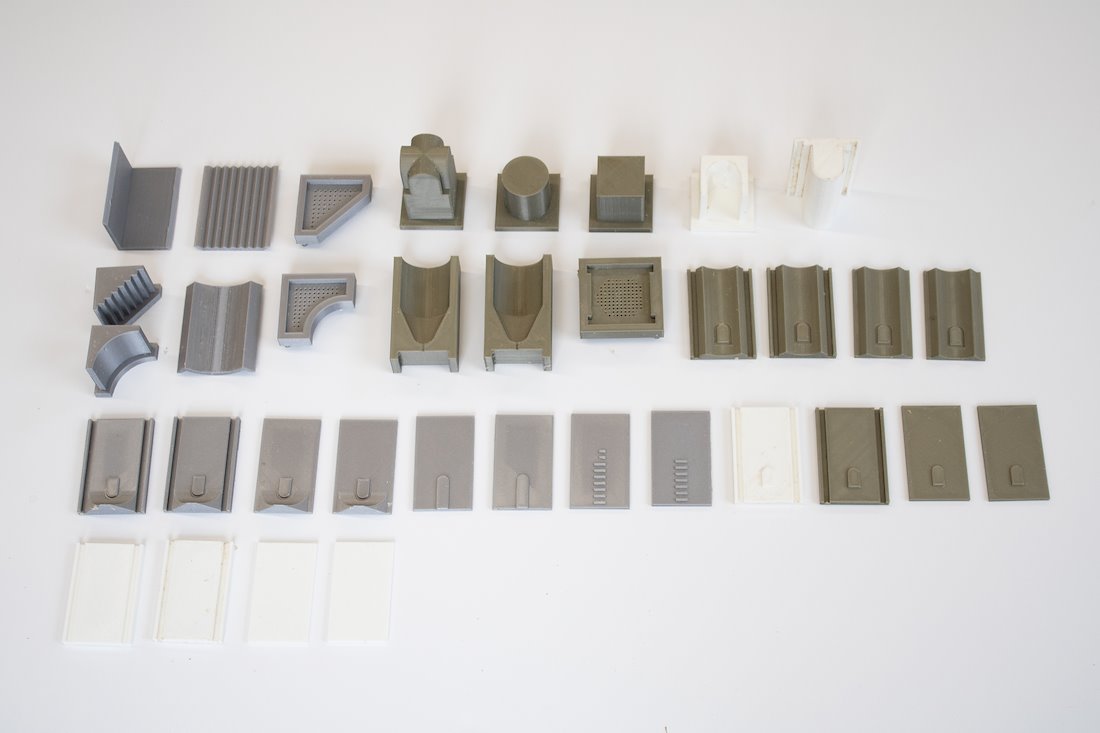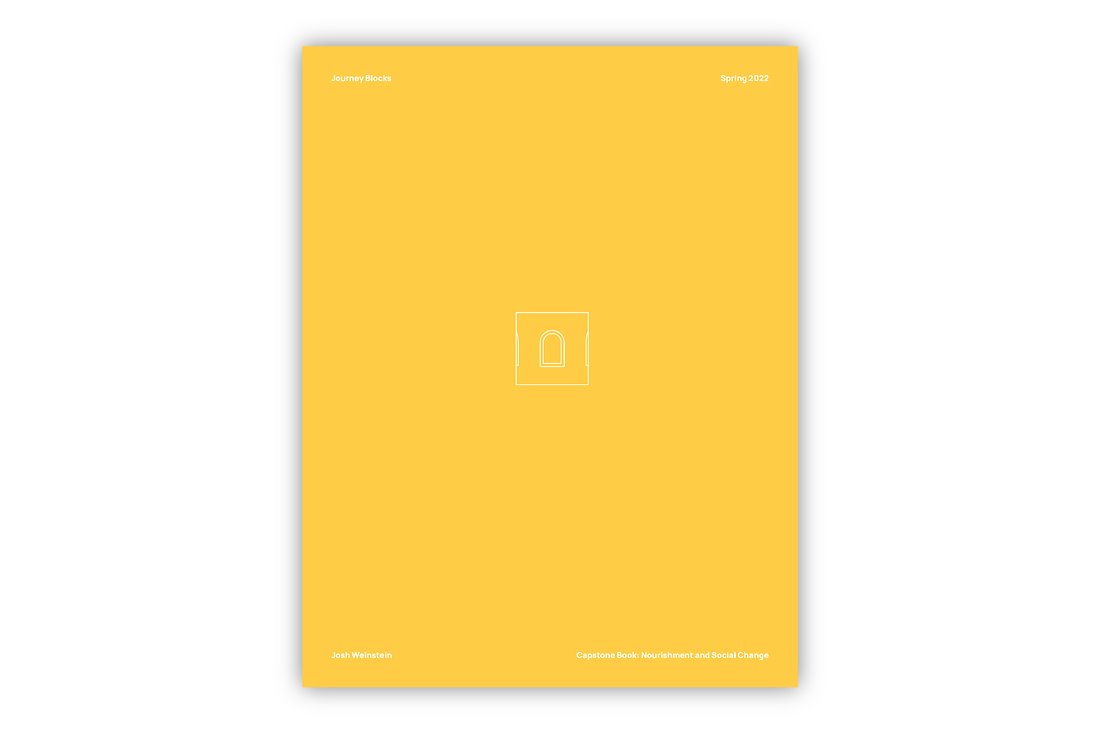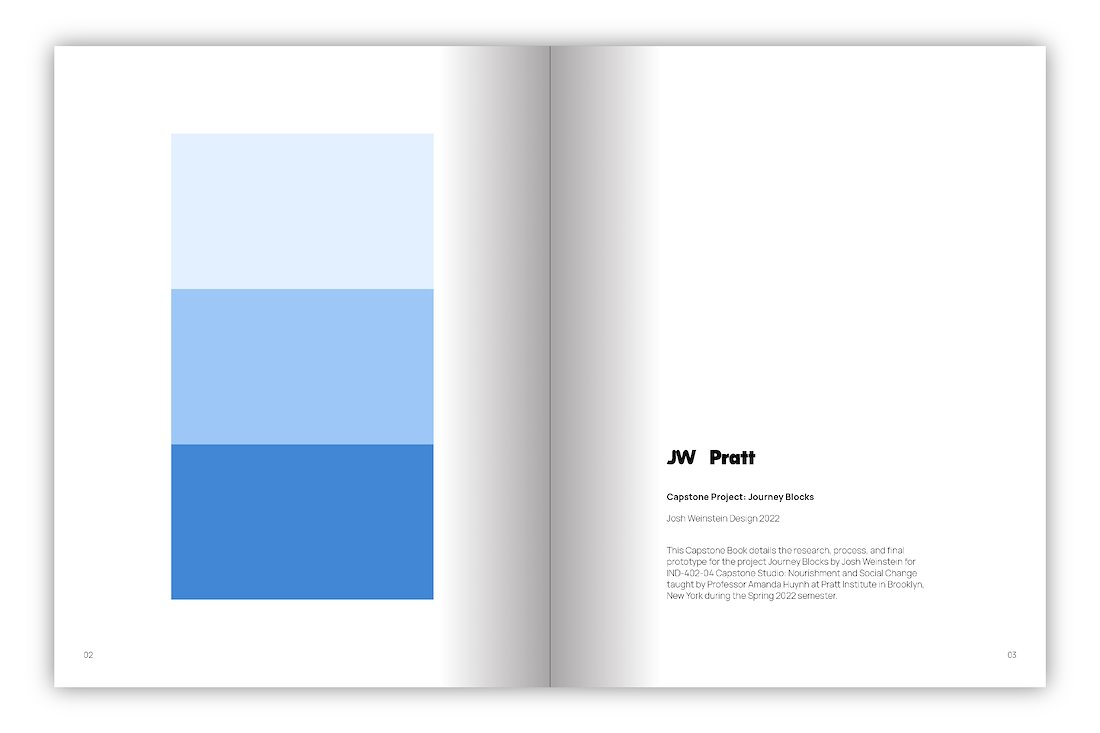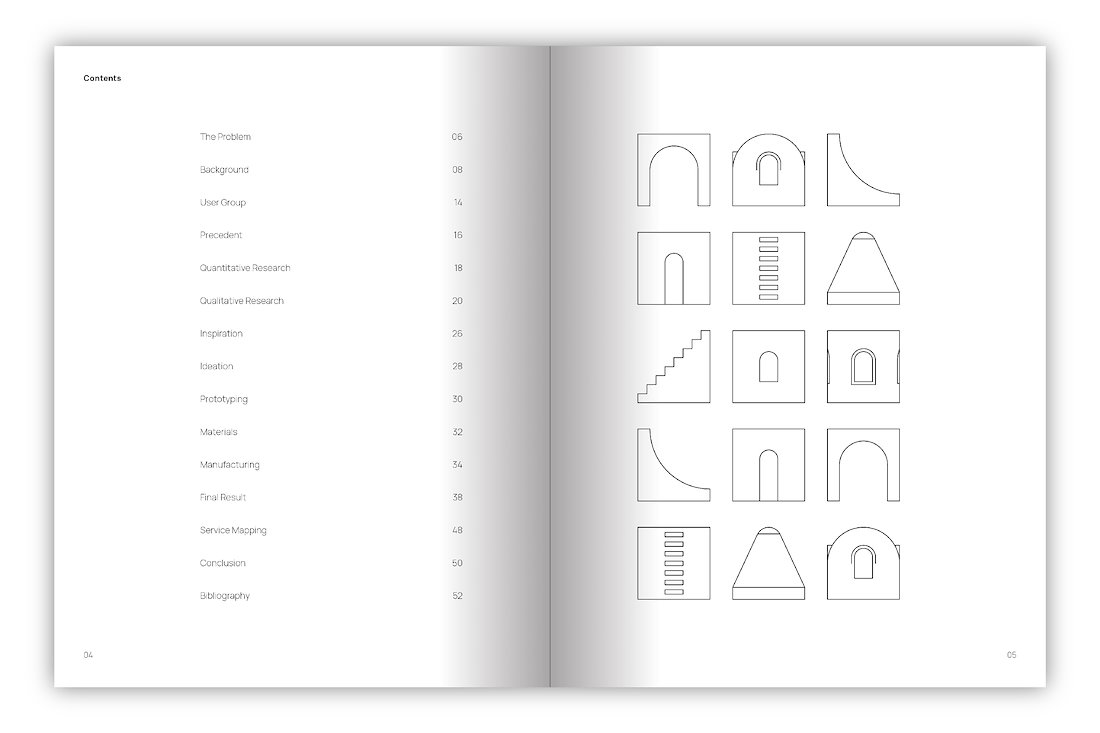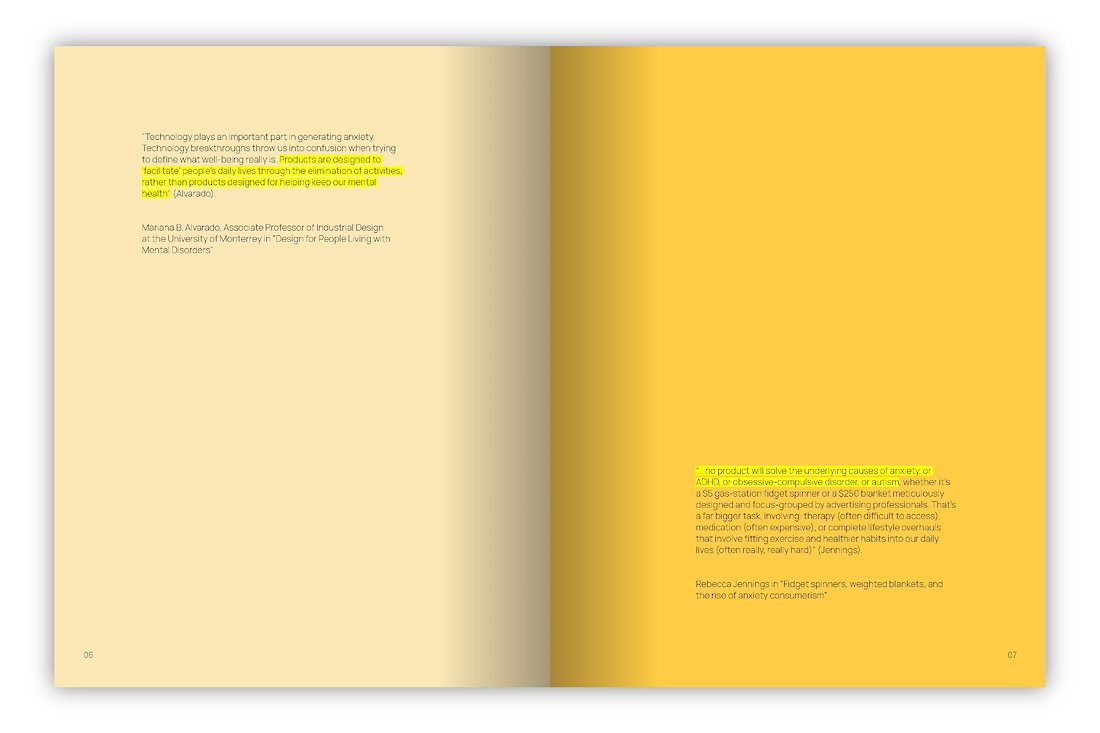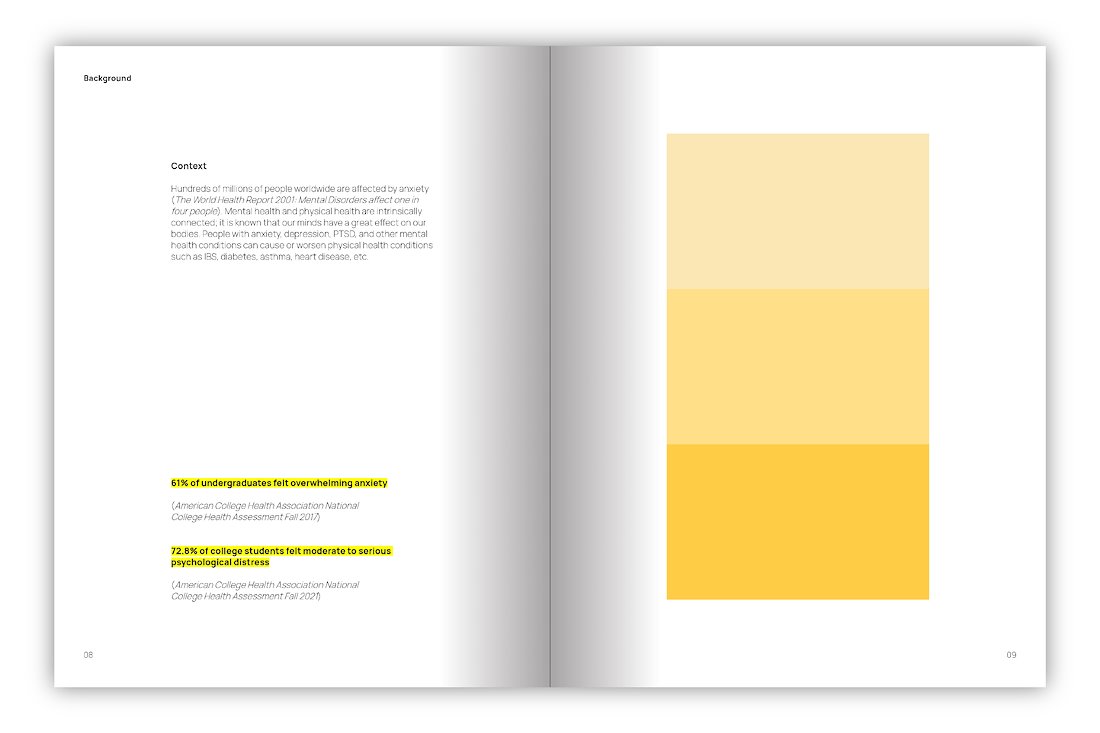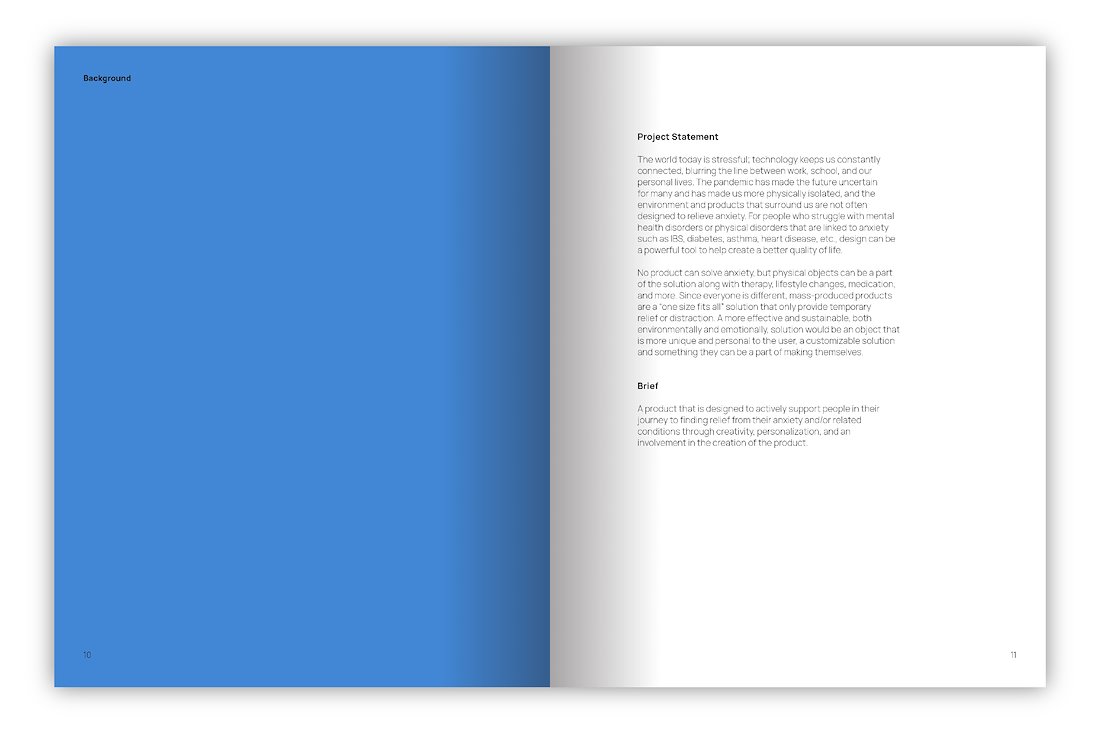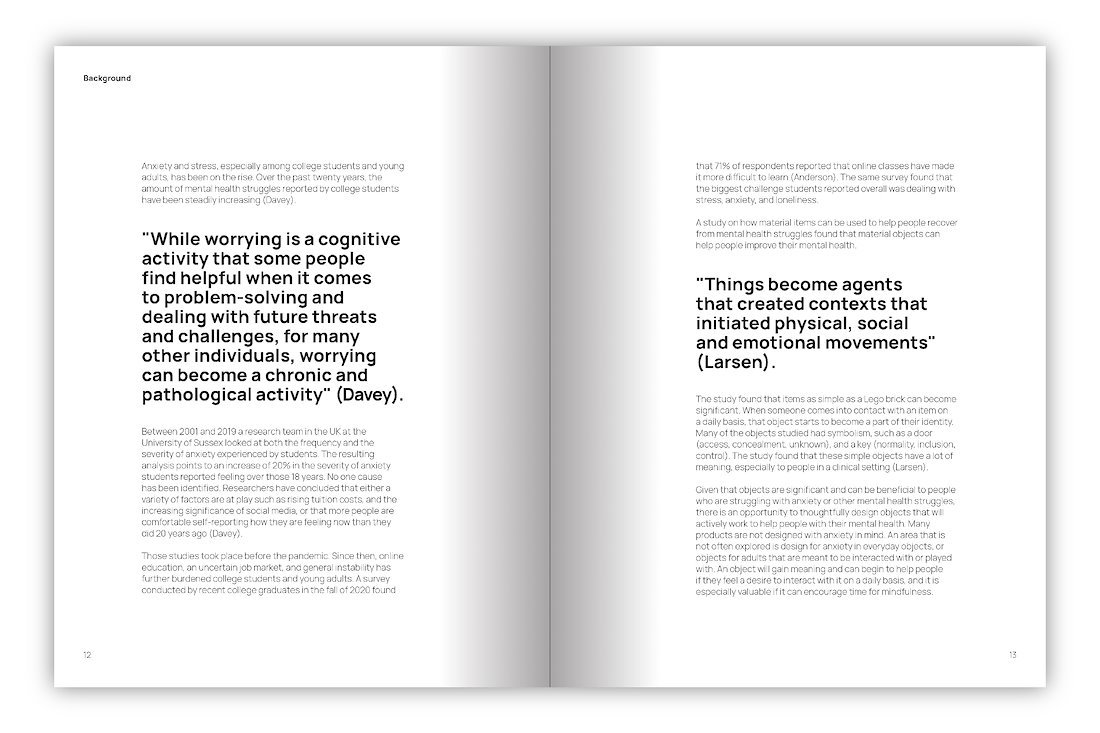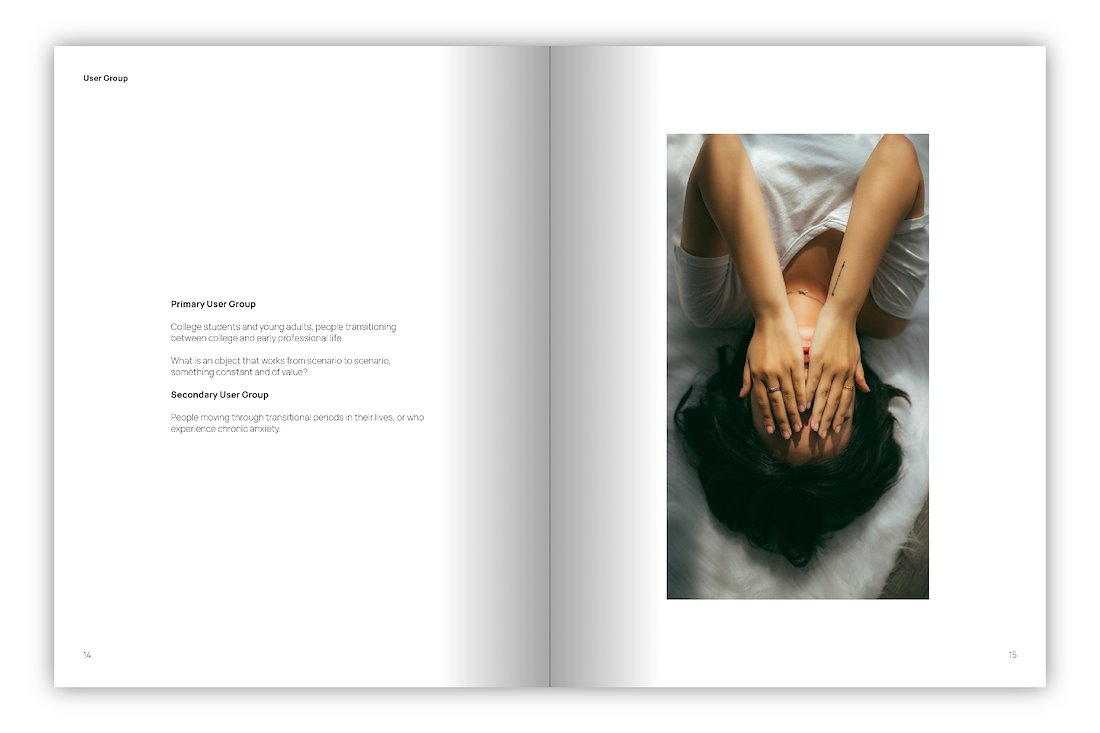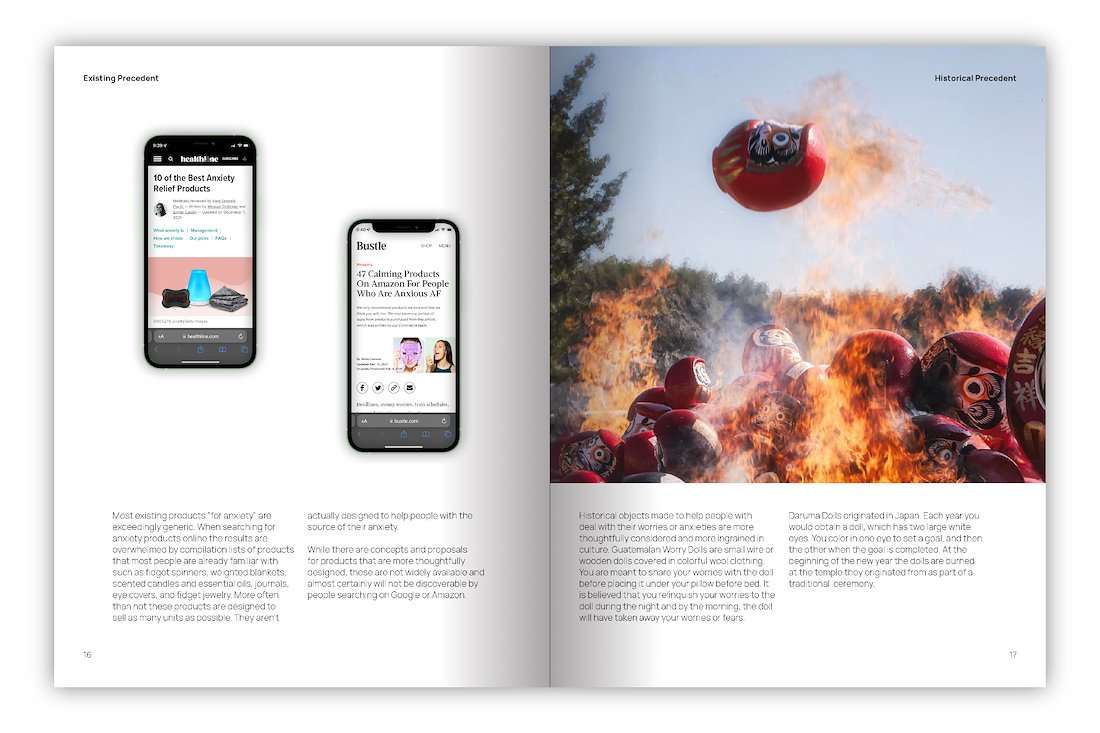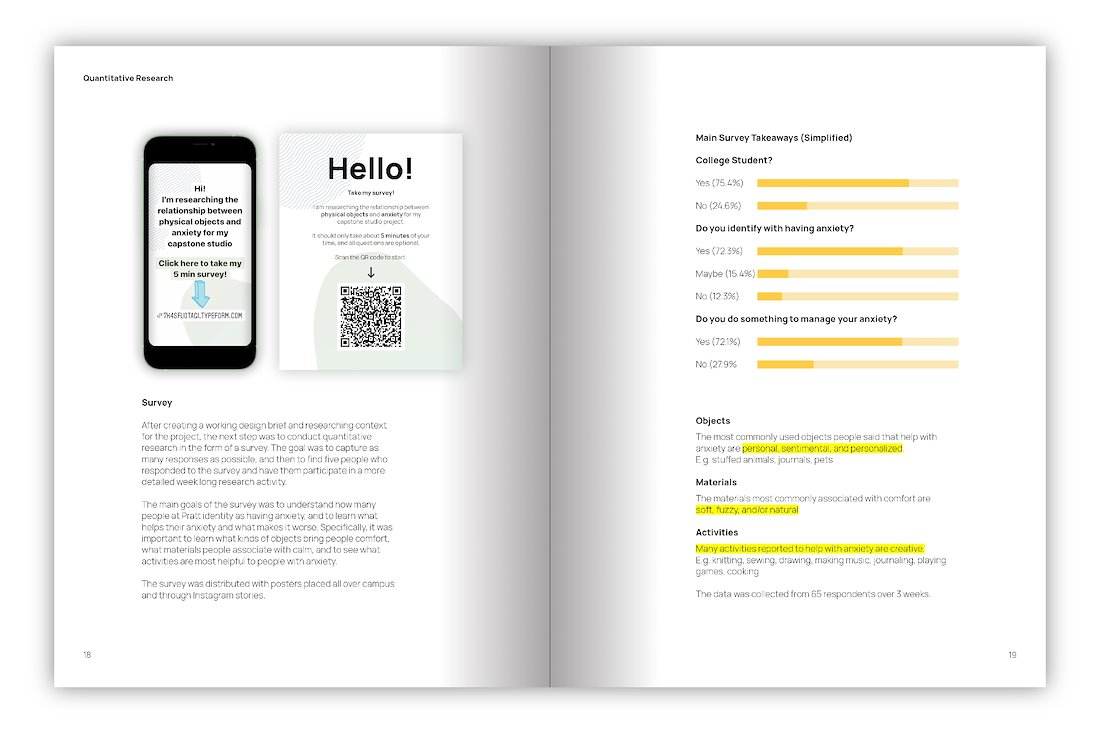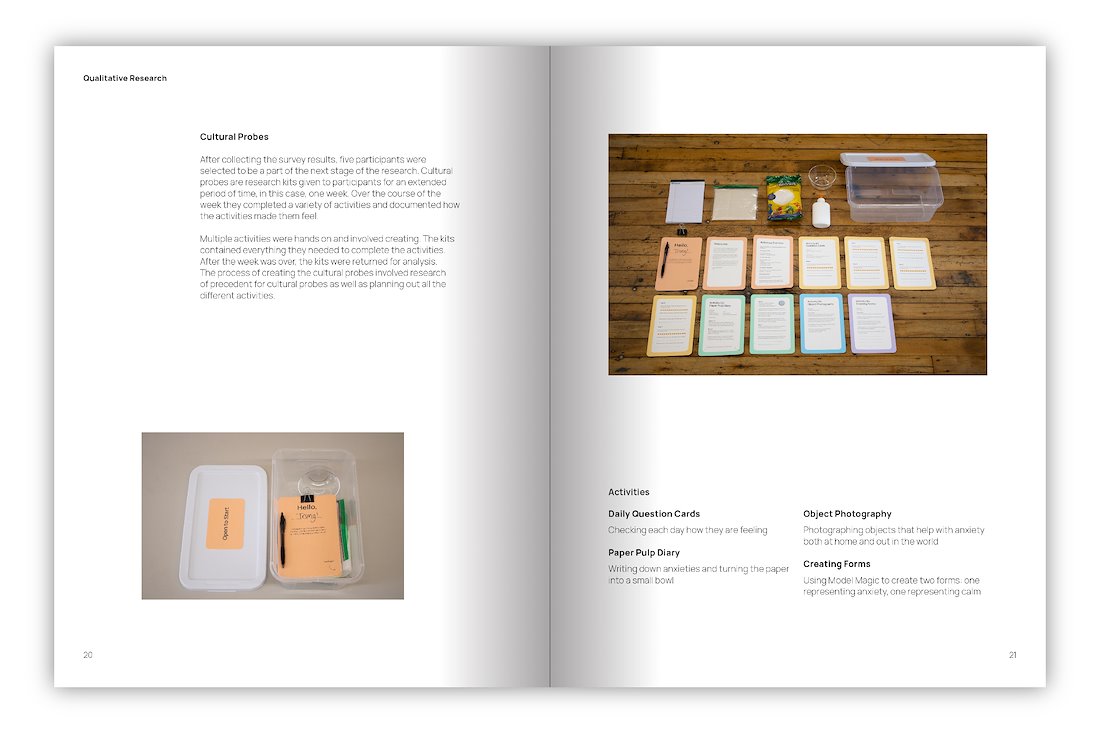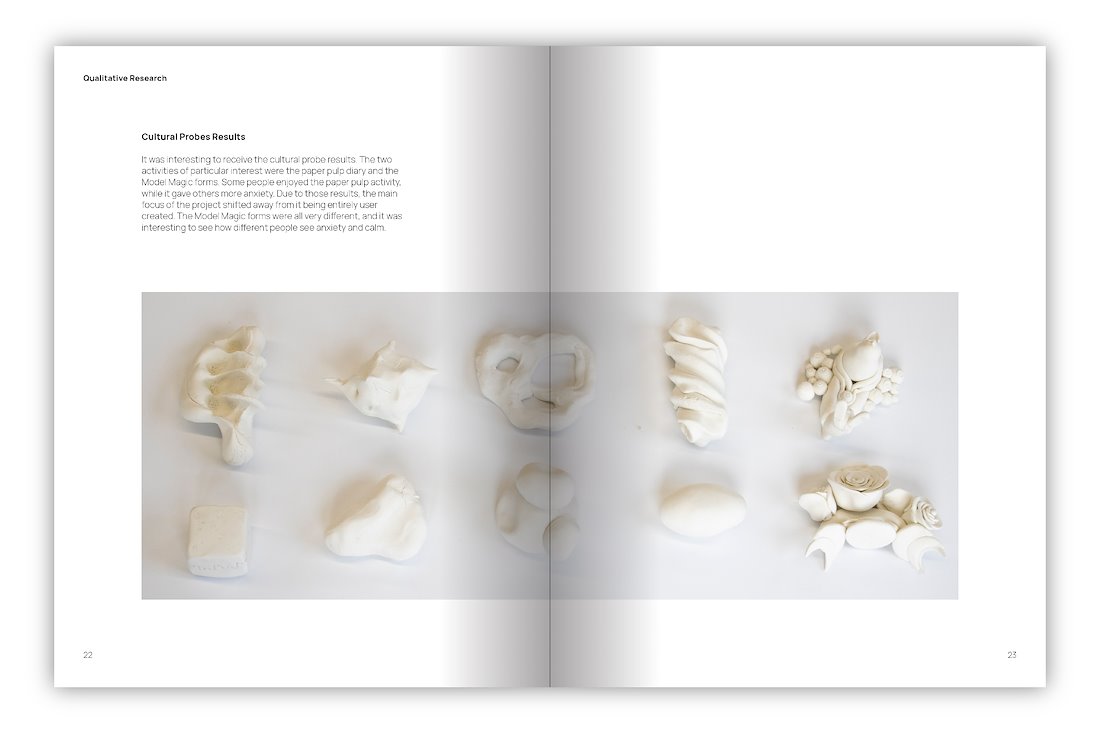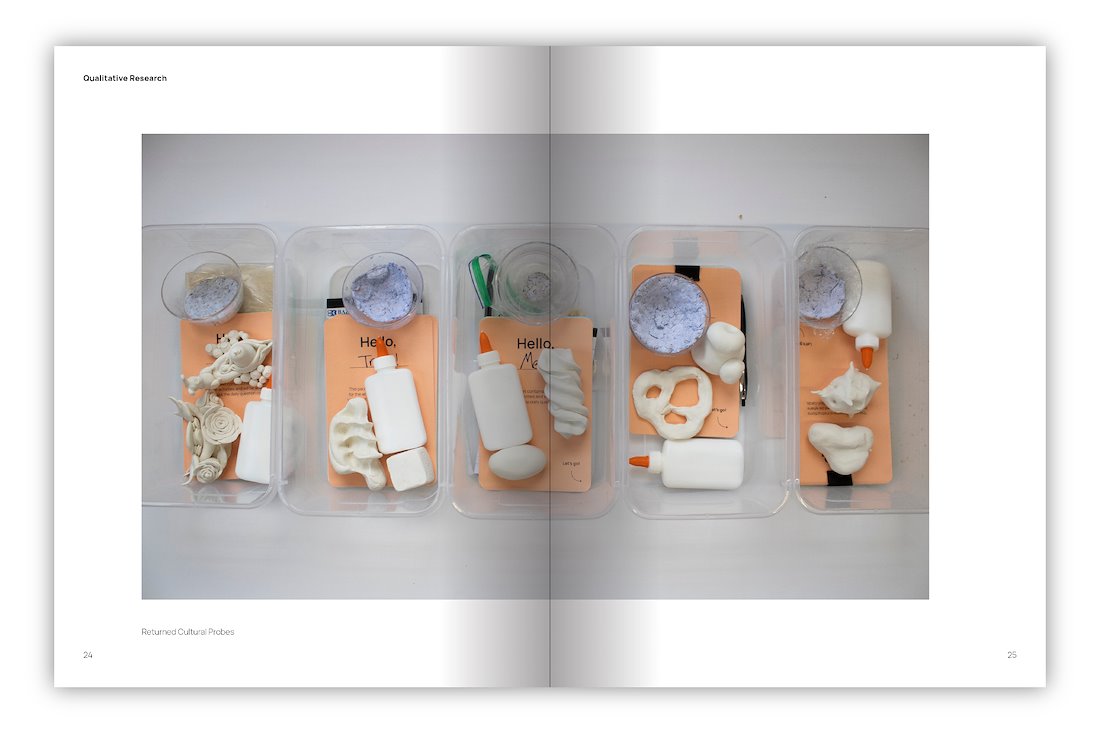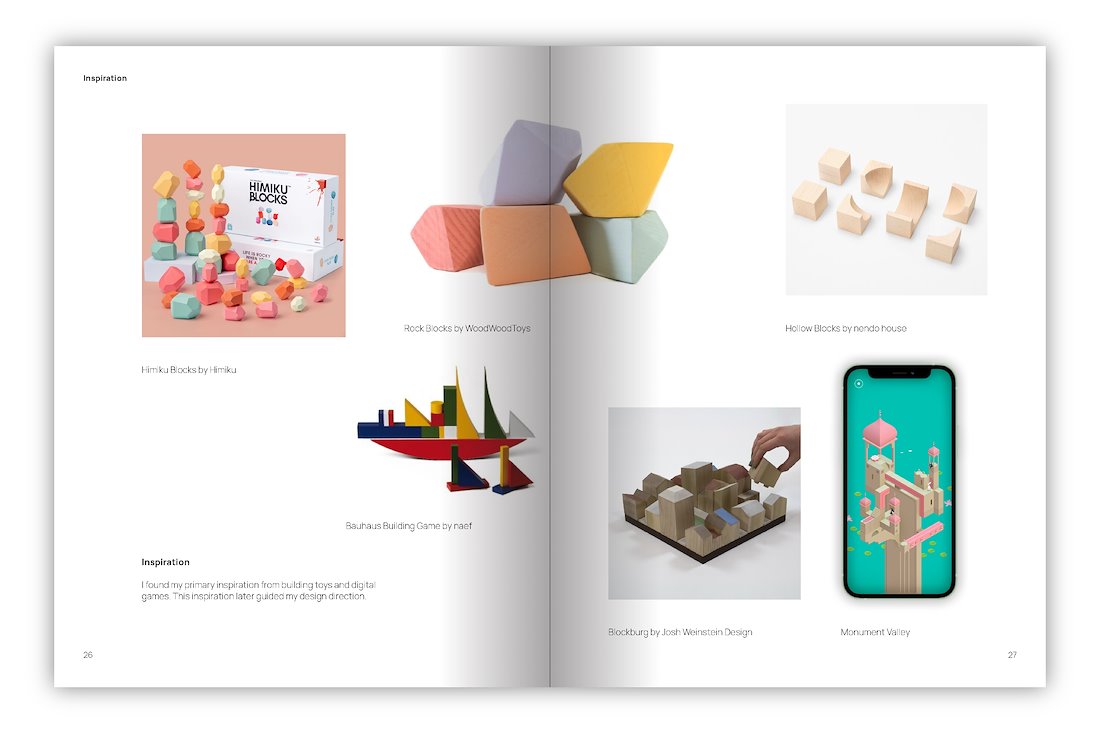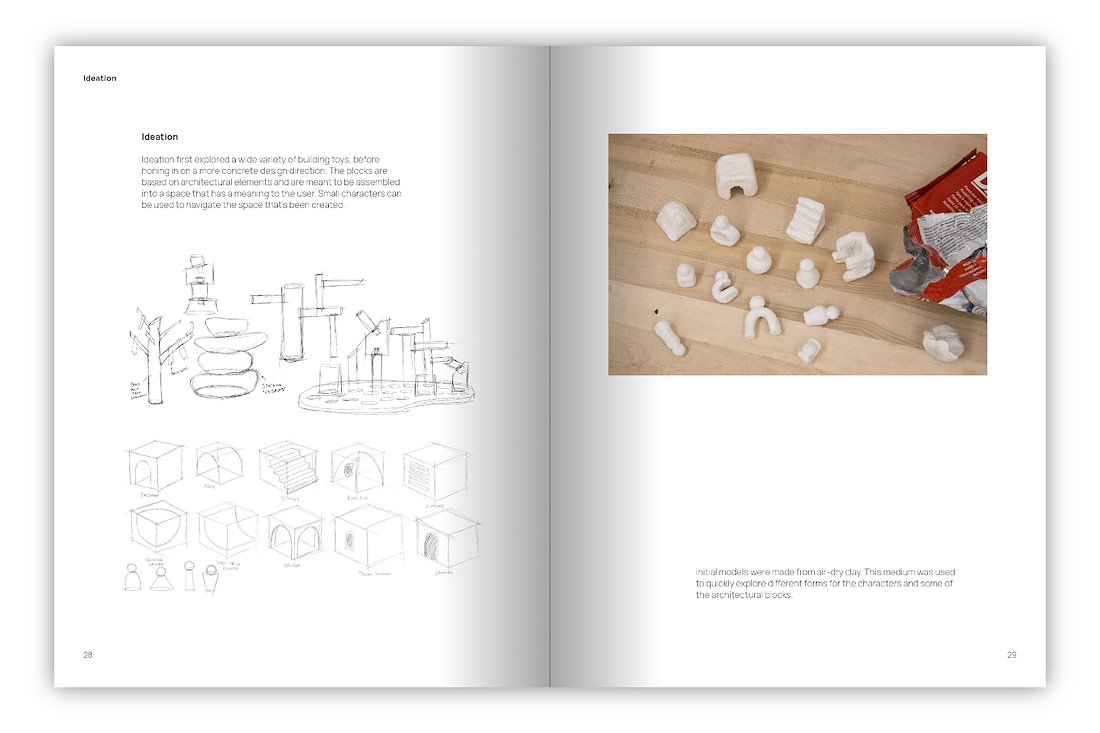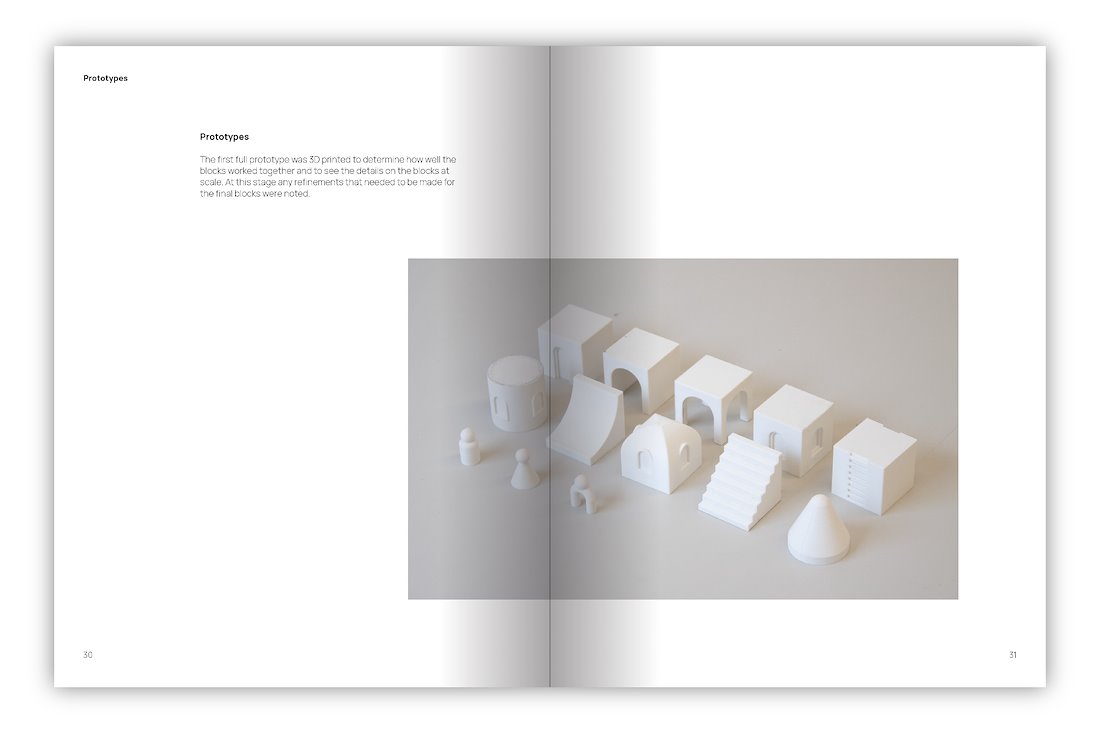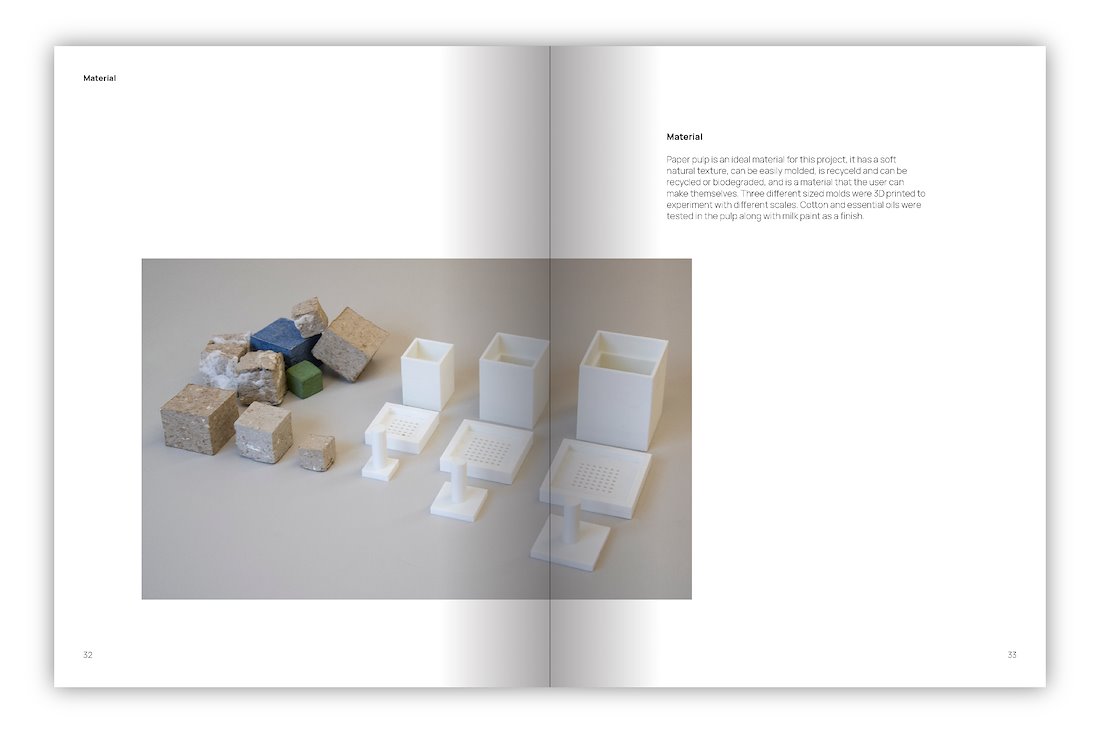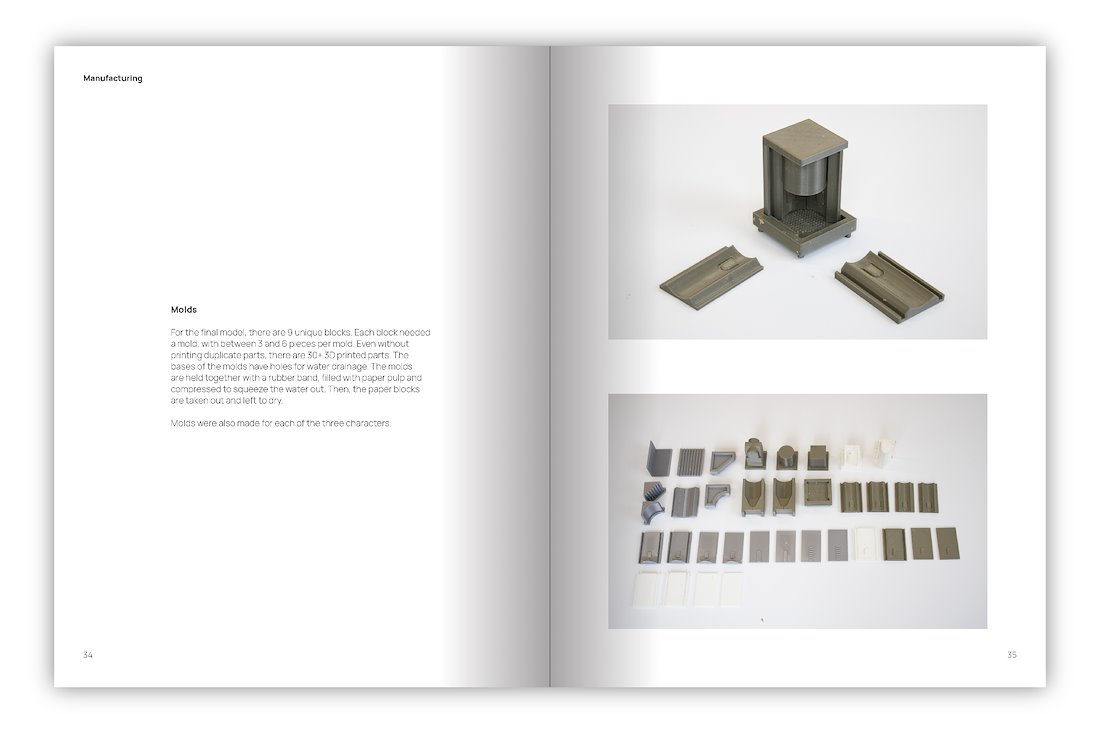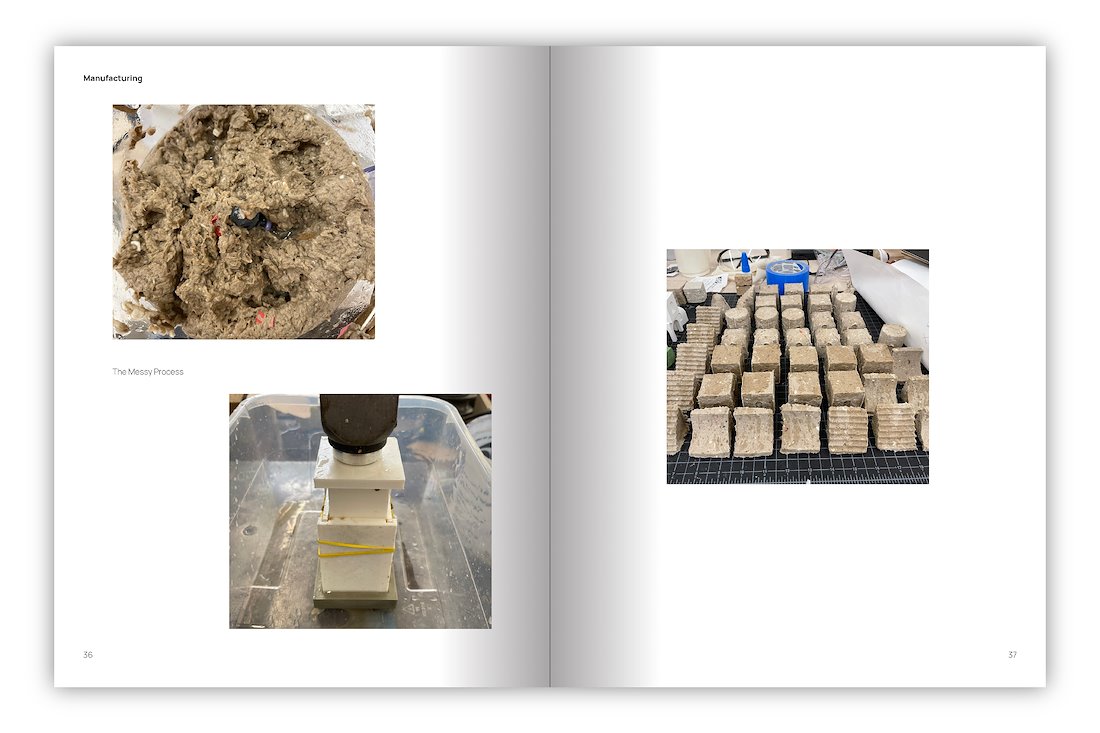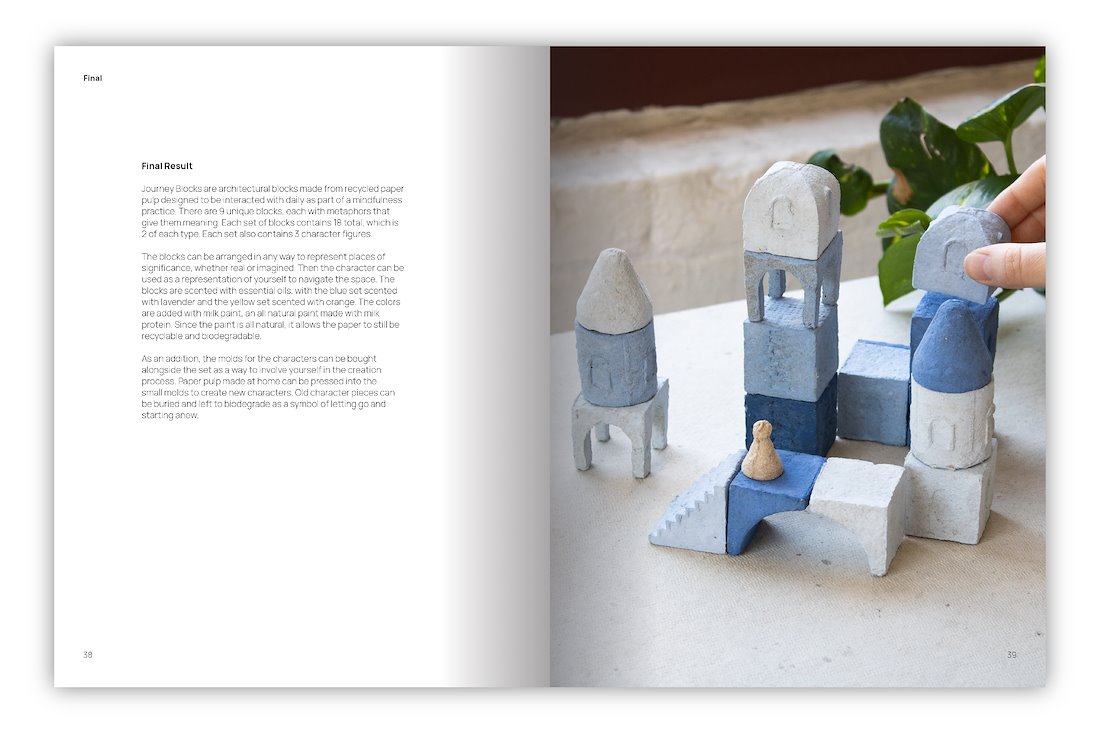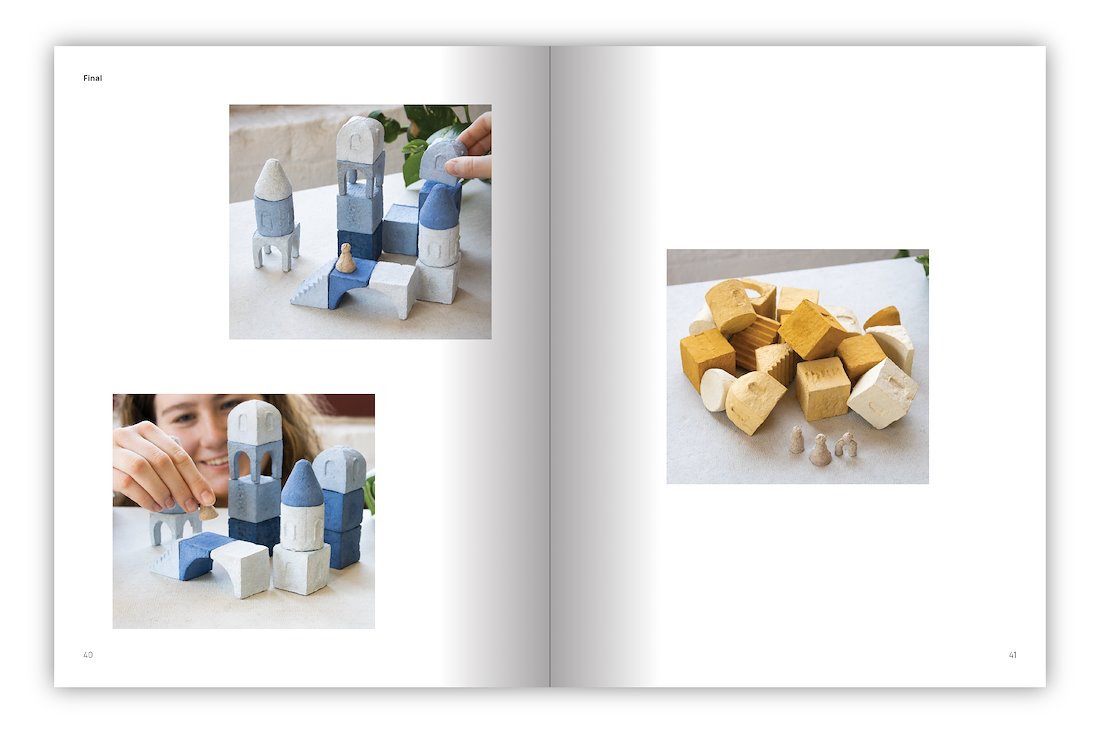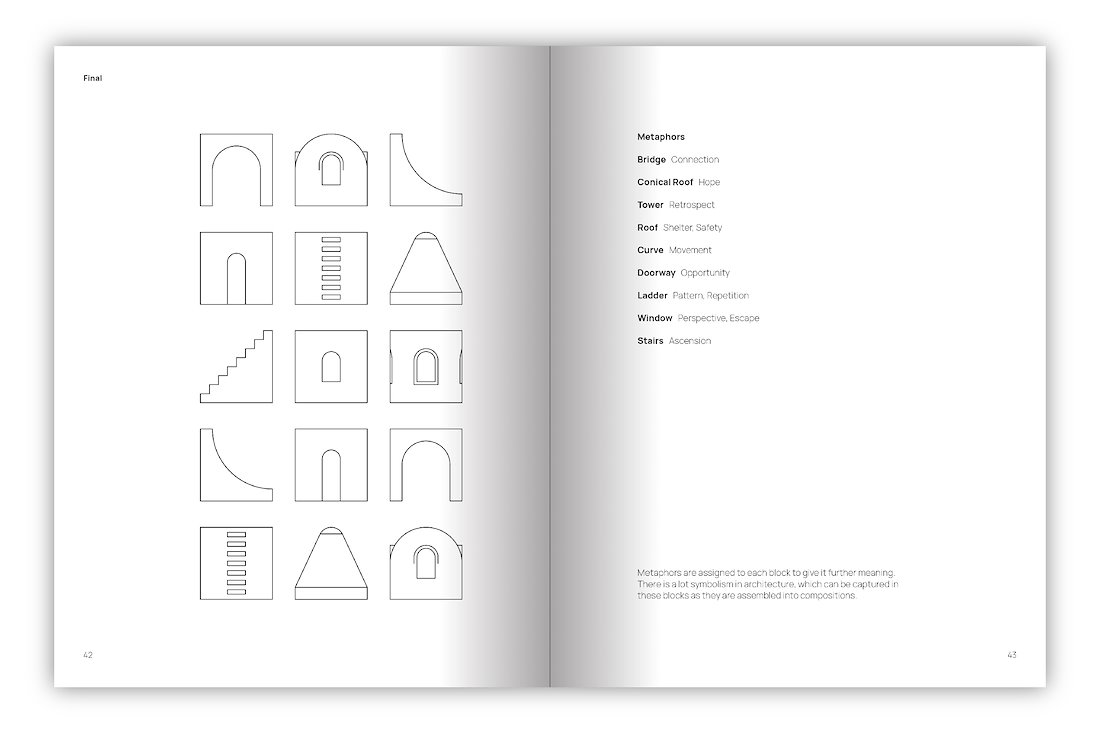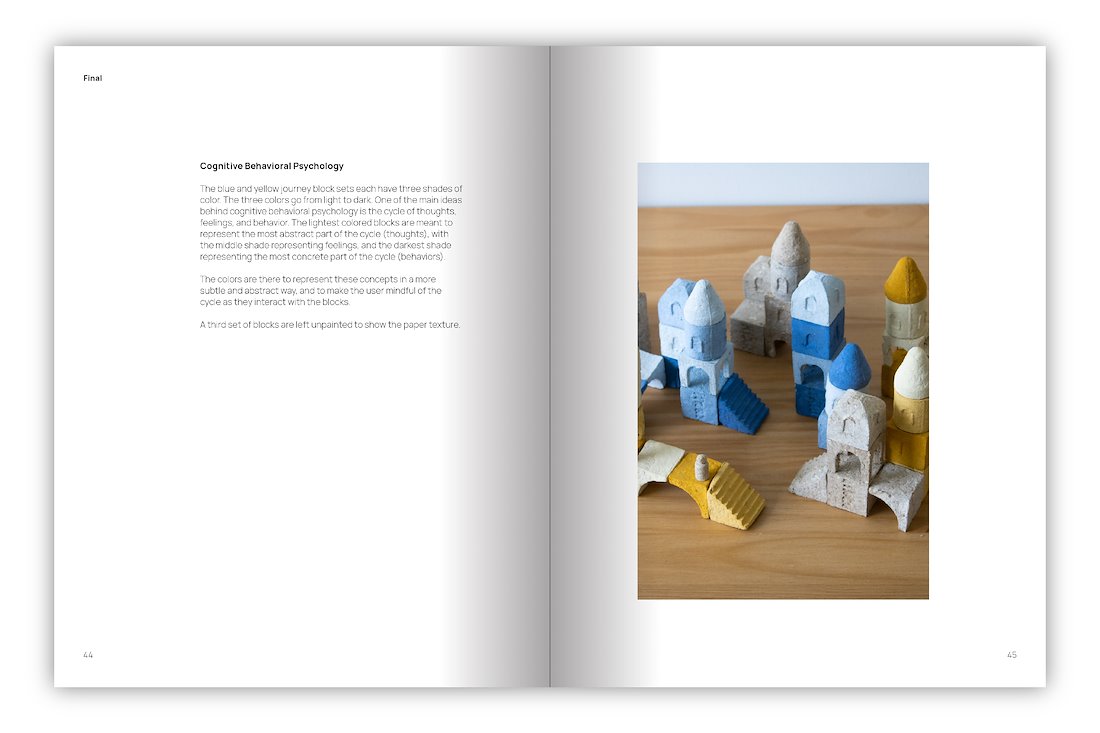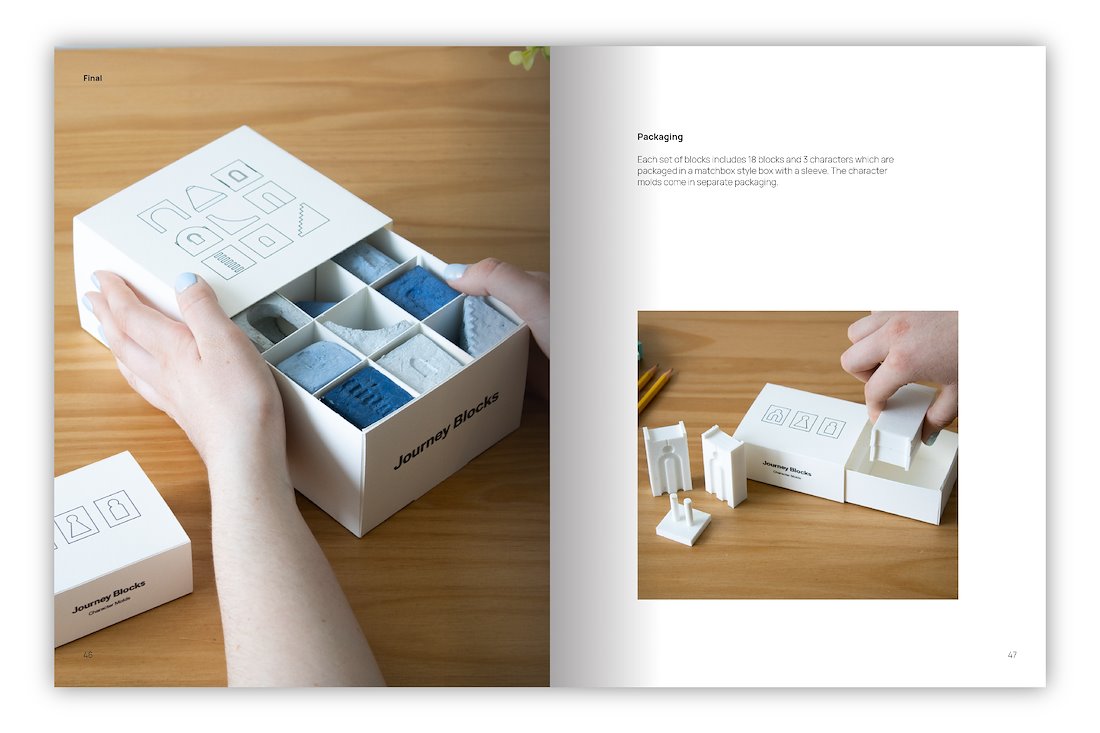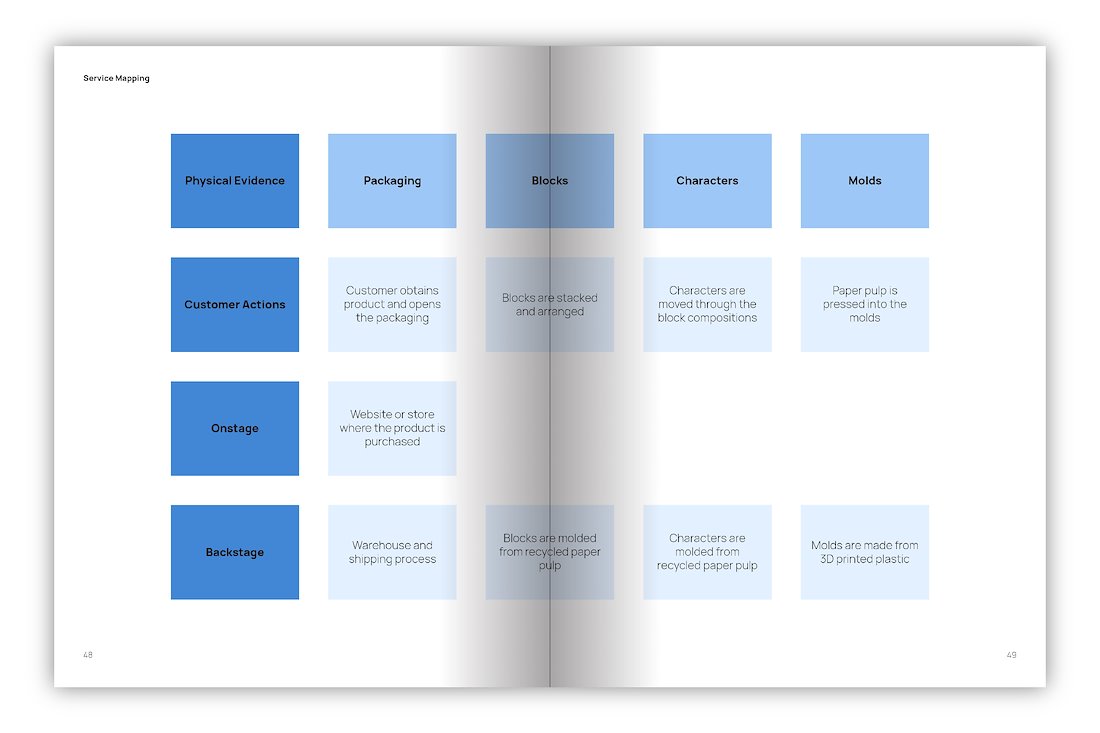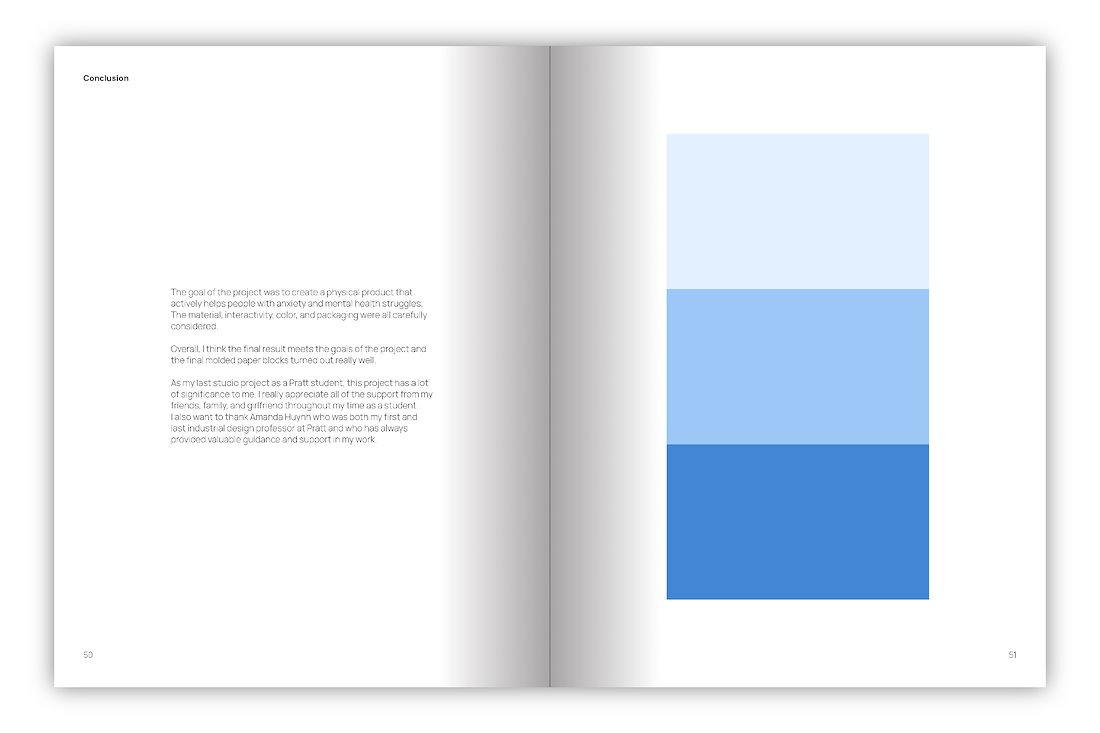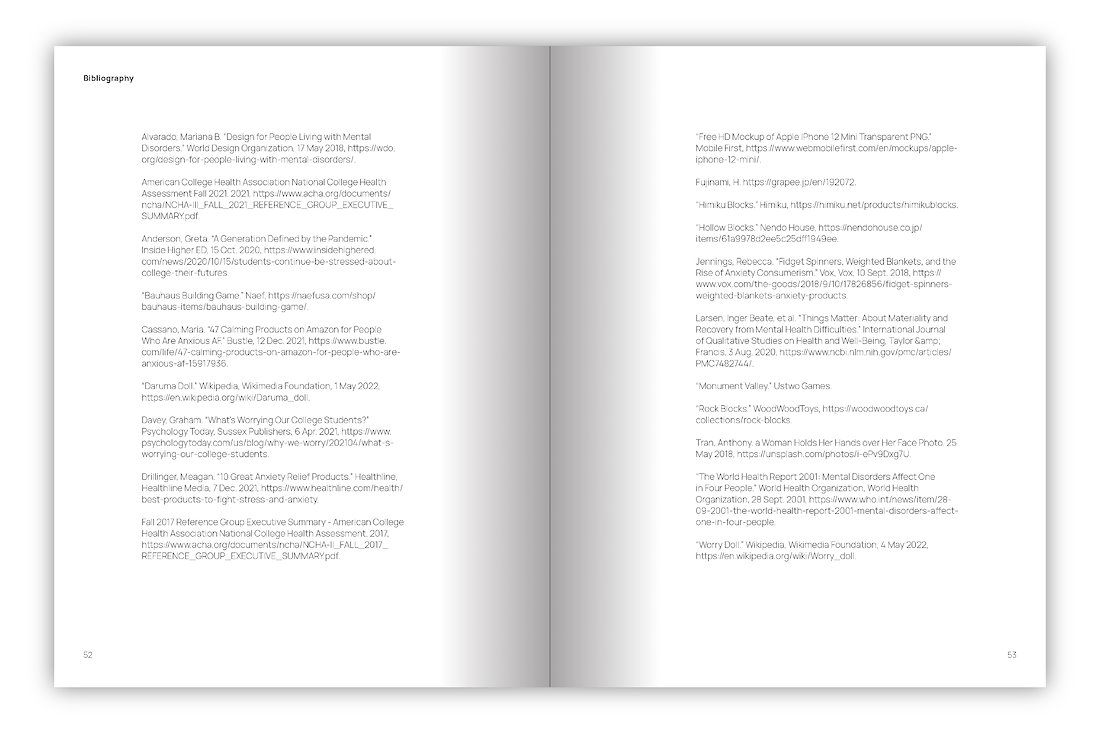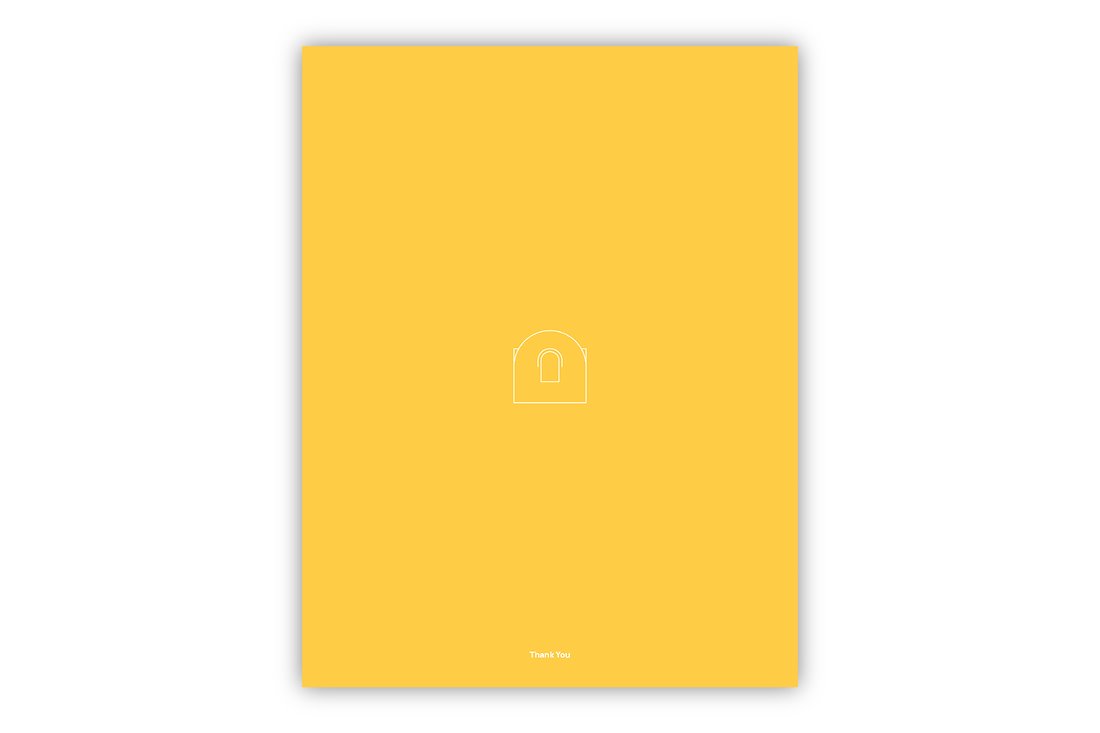BACHELOR OF INDUSTRIAL DESIGN DEGREE CAPSTONE PROJECT – 2022
DURATION – 5 MONTHS
PRATT INSTITUTE SCHOOL OF DESIGN SOCIAL JUSTICE AND SUSTAINABILITY AWARDS
2022 WINNING PROJECT
FEATURED AT WANTED DESIGN / ICFF 2023
How can a product encourage mindfulness to reduce anxiety?
Journey Blocks are architectural building blocks designed to actively support people in their journey to finding relief from anxiety and/or related conditions by encouraging interaction, creativity, introspection, personalization, and creating a space for mindfulness.


- Journey Blocks can be arranged to visualize spaces that are meaningful – real or imagined. A character is used to represent yourself navigating your space. Three colors were chosen to create an awareness of the cycle of thoughts influencing feelings influencing behavior outlined in cognitive behavioral therapy. The set is designed to create a space for a mindfulness to manage anxiety. Molds for the characters are available to involve the user in the creation of the product.

Colored blocks are infused with lavender and orange essential oils.

THE PROBLEM
61% of undergraduates felt overwhelming anxiety
72.8% of college students felt moderate to serious psychological distress
“…no product will solve the underlying causes of anxiety, or ADHD, or obsessive-compulsive disorder, or autism, whether it’s a $5 gas-station fidget spinner or a $250 blanket meticulously designed and focus-grouped by advertising professionals. That’s a far bigger task, involving: therapy (often difficult to access), medication (often expensive), or complete lifestyle overhauls that involve fitting exercise and healthier habits into our daily lives (often really, really hard)”
RESEARCH
I conducted a survey as a form of quantitative research, the following are findings from this survey:
The most commonly used objects that help with anxiety are personal, sentimental, and personalized, such as stuffed animals, journals, and pets. The materials most commonly associated with comfort are soft, fuzzy, and/or natural. Many activities reported to help with anxiety are creative, such as knitting, sewing, drawing, making music, journaling, playing games, and cooking. The data was collected from 65 respondents over 3 weeks.
Cultural probes were utilized as a form of qualitative research. Five participants took a week to complete a series of activities, including creating a paper pulp bowl from diary pages, creating calm and anxious forms with model magic, and filling out daily questions. The goal was to guide ideation on a product that encourages mindful behavior.


- Initial sketches explored characters that could be molded from pulp by the user. However, the activity in the cultural probe that consisted of making pulp forms from diary pages caused stress for some participants. So, I also explored construction toys, with further sketches beginning to focus on the final idea of architectural building blocks with small characters.



- I modeled the blocks and characters in clay. A 3D printed prototype allowed the idea to be tested and refined. 3D printed prototype molds allowed to me experiment with material and color.

Material and scale exploration.
- The molds for the final blocks are 3D printed. To make the blocks and characters, any kind of non-soiled paper such as magazines, cardboard, card-stock, etc. is shredded and blended with water to create a pulp. Next, the pulp is compressed in a mold, taken out, and left to dry. There is no glue needed as the fibers in the pulp bind together, meaning all parts are fully recyclable and biodegradable.




